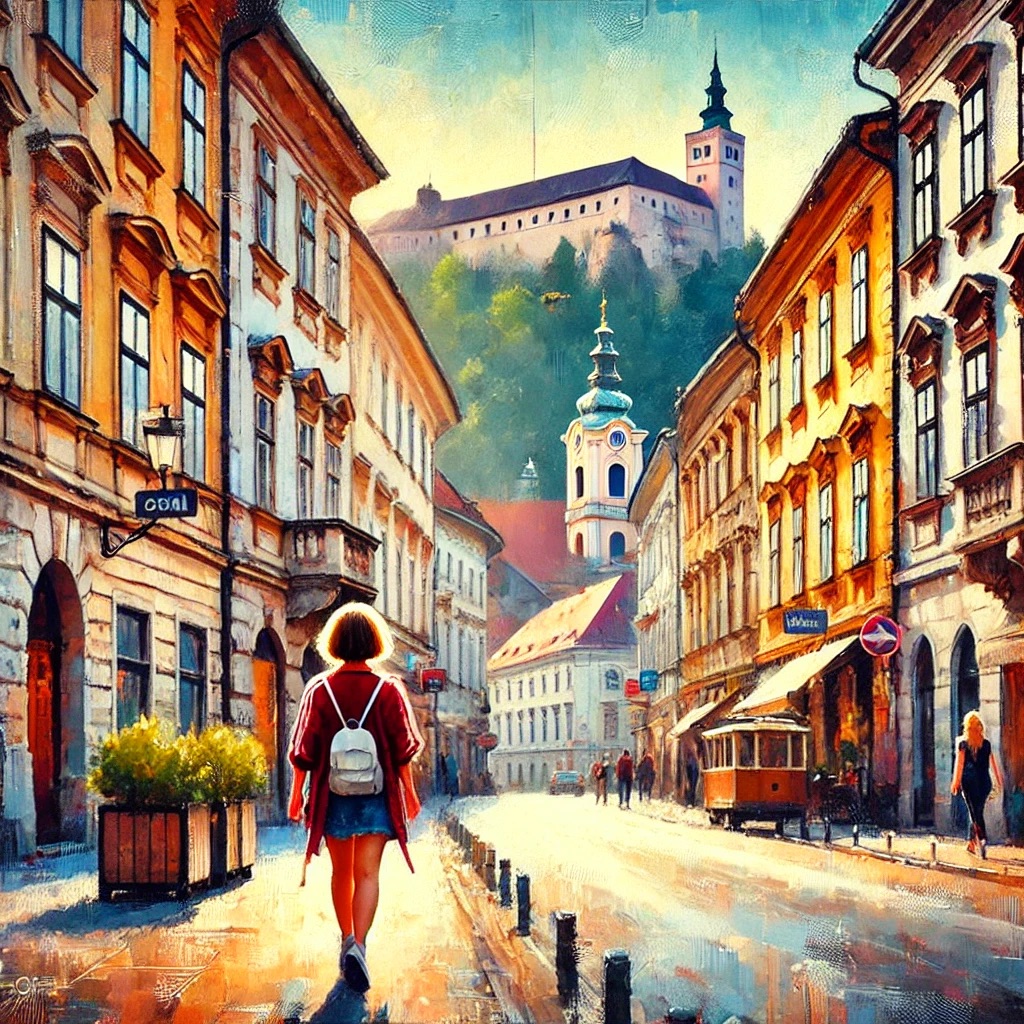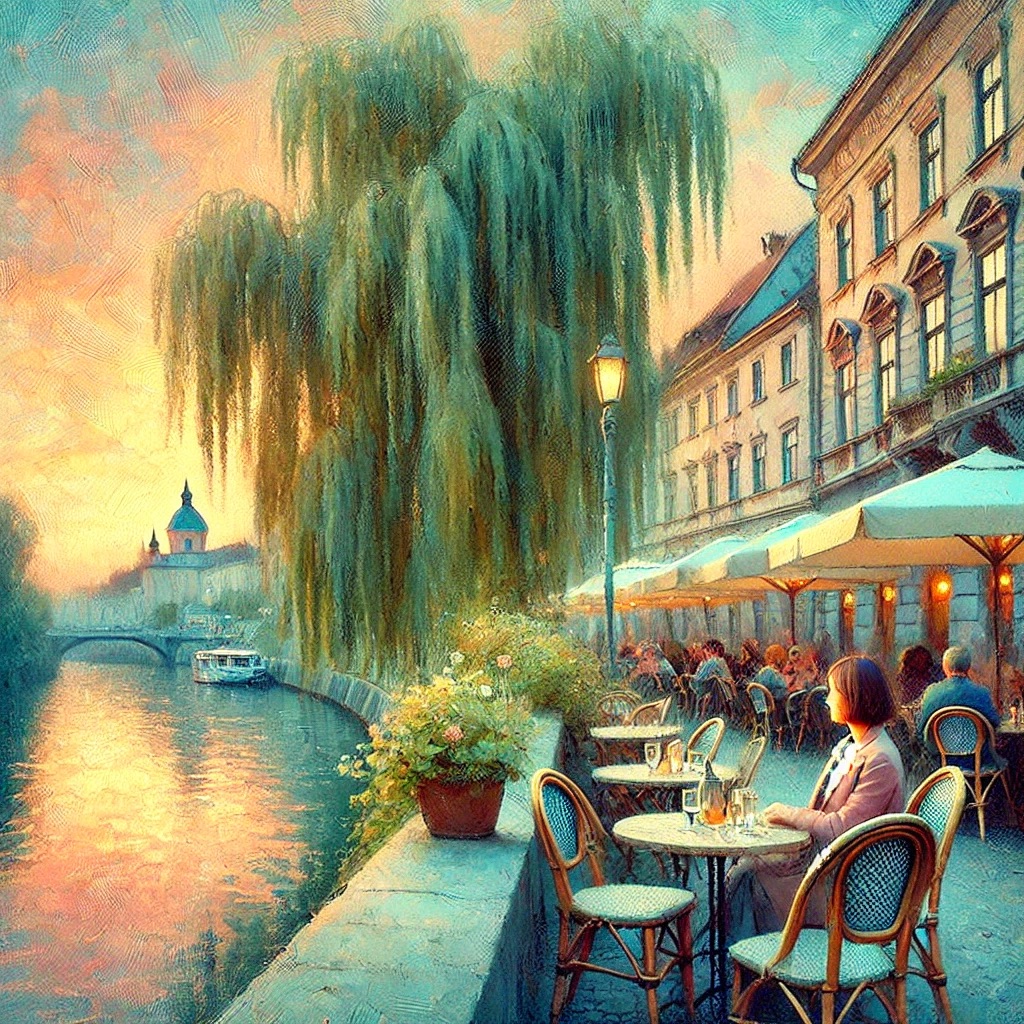ChatGPT:Ljubljana is the capital and largest city of Slovenia, located in the central part of the country. It is known for its picturesque architecture, vibrant cultural scene, and green spaces. The city is characterized by a mix of Baroque and Art Nouveau architecture, with notable landmarks including the Ljubljana Castle, the Triple Bridge, and the Dragon Bridge. The Ljubljanica River flows through the city, adding to its scenic charm.
Ljubljana is also known for its university, which brings a youthful and lively atmosphere to the city. The city’s center is pedestrian-friendly, with a bustling market, cafes, and restaurants offering local and international cuisine. Ljubljana has a strong focus on sustainability and has been recognized as a green city, with many parks and initiatives promoting eco-friendly living. The city’s cultural scene includes museums, theaters, and festivals, making it a vibrant destination for both locals and tourists.

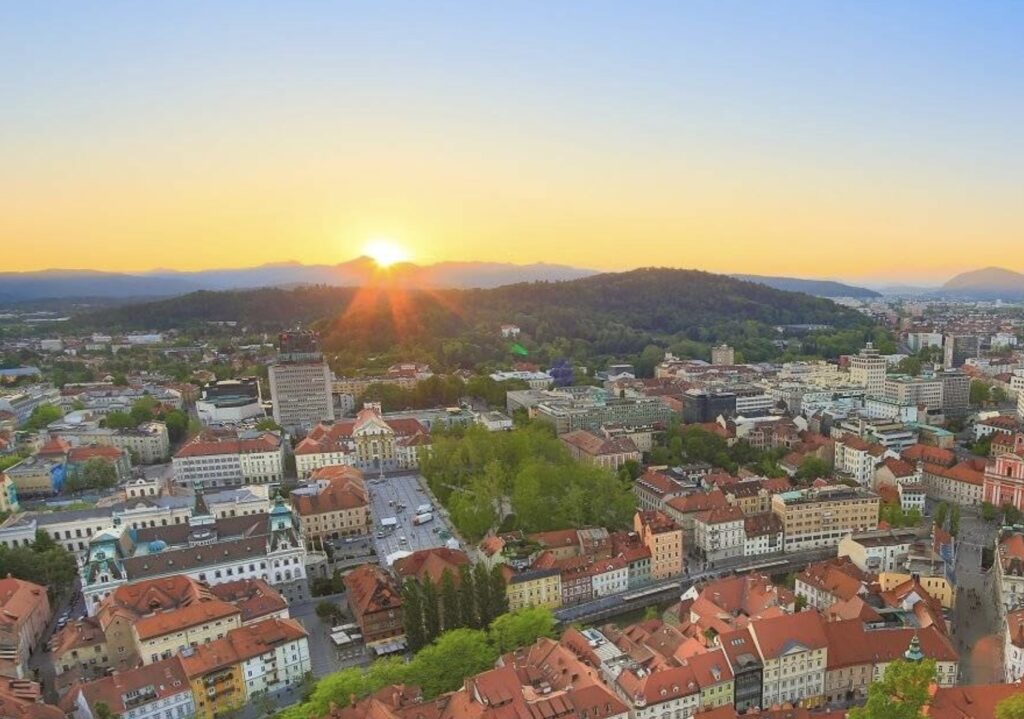
Origin and Early History:
Ljubljana has ancient origins, with archaeological evidence suggesting settlement in the area as far back as the prehistoric era. The earliest known settlement was established by the Veneti people around 2000 BC. The area later became a significant Roman settlement called Emona, founded around 14 AD. Emona was an important military outpost and trade hub in the Roman Empire, with well-developed infrastructure, including streets, buildings, and fortifications.
Medieval Period:
After the fall of the Roman Empire, Ljubljana went through a period of decline but regained prominence in the medieval era. The name “Ljubljana” first appeared in historical records in 1144, and the town became part of the Holy Roman Empire. During the 13th and 14th centuries, Ljubljana developed as a medieval town with a market, and in 1335, it came under the control of the Habsburgs. The city’s strategic location along trade routes contributed to its growth and prosperity.
Renaissance and Baroque Periods:
In the 16th century, Ljubljana experienced significant cultural and architectural development, influenced by the Renaissance. This period saw the construction of important buildings and the establishment of schools and institutions. The Baroque period in the 17th and 18th centuries further shaped the city’s architecture, with many churches, palaces, and public buildings being constructed or renovated in the Baroque style.
19th and Early 20th Centuries:
The 19th century brought industrialization and modernization to Ljubljana. The city became a hub for industry, trade, and culture within the Austrian Empire. The construction of railroads and modern infrastructure facilitated economic growth. Ljubljana’s population expanded, and the cityscape was transformed with new public buildings, parks, and residential areas.
20th Century to Present:
After World War I, Ljubljana became the capital of the newly established Kingdom of Serbs, Croats, and Slovenes, later known as Yugoslavia. During World War II, the city was occupied by Italian and then German forces. After the war, Ljubljana became the capital of the Socialist Republic of Slovenia within communist Yugoslavia.
With the breakup of Yugoslavia in 1991, Slovenia declared independence, and Ljubljana became the capital of the independent Republic of Slovenia. Since then, the city has experienced significant growth and development. It has become an important political, economic, and cultural center in the region, known for its high quality of life, vibrant cultural scene, and focus on sustainability.
Today, Ljubljana is a dynamic city that blends its rich historical heritage with modern urban development. The city’s commitment to green initiatives and pedestrian-friendly areas has earned it recognition as a leading European city for sustainability and quality of life.
Historical Monuments and Tourist Attractions in Ljubljana:
- Ljubljana Castle: A medieval fortress perched on a hill overlooking the city, offering panoramic views and a glimpse into the city’s history.
- Triple Bridge (Tromostovje): A unique architectural feature comprising three bridges, designed by the famous Slovenian architect Jože Plečnik.
- Dragon Bridge (Zmajski Most): An iconic bridge adorned with dragon statues, symbolizing the city’s emblem.
- Prešeren Square: The central square of Ljubljana, named after the Slovenian poet France Prešeren, featuring a statue of him and the beautiful Franciscan Church of the Annunciation.
- Ljubljanica River and Riverside: A picturesque area with cafes and restaurants, perfect for a stroll along the riverbanks or a boat ride.
- Tivoli Park: The largest park in Ljubljana, offering walking paths, gardens, and recreational facilities, as well as the Tivoli Mansion and International Centre of Graphic Arts.
- Ljubljana Cathedral (St. Nicholas’s Cathedral): A stunning Baroque cathedral with impressive frescoes and artwork.
- Robba Fountain (Fountain of the Three Carniolan Rivers): A Baroque fountain located in front of the Town Hall, symbolizing the city’s connection to water.
- National Museum of Slovenia: The country’s oldest and largest museum, housing archaeological, ethnographic, and historical collections.
- National Gallery of Slovenia: A major art museum featuring a collection of Slovenian and European art from the medieval period to the 20th century.
- Metelkova City: A vibrant cultural and artistic hub located in a former military barracks, known for its alternative scene, street art, and nightlife.
- Ljubljana Central Market: Designed by Jože Plečnik, this market is a bustling place to explore local produce, crafts, and food.
- Butchers’ Bridge: A modern pedestrian bridge known for its “love locks” and contemporary design, also featuring sculptures by local artists.
- Križanke Summer Theatre: An open-air venue hosting cultural events, concerts, and festivals, located in a former monastery.
- Botanic Garden Ljubljana: One of the oldest botanical gardens in Europe, featuring a diverse collection of plants.
These attractions highlight Ljubljana’s rich cultural heritage, architectural beauty, and vibrant urban life, making it a fascinating destination for visitors.
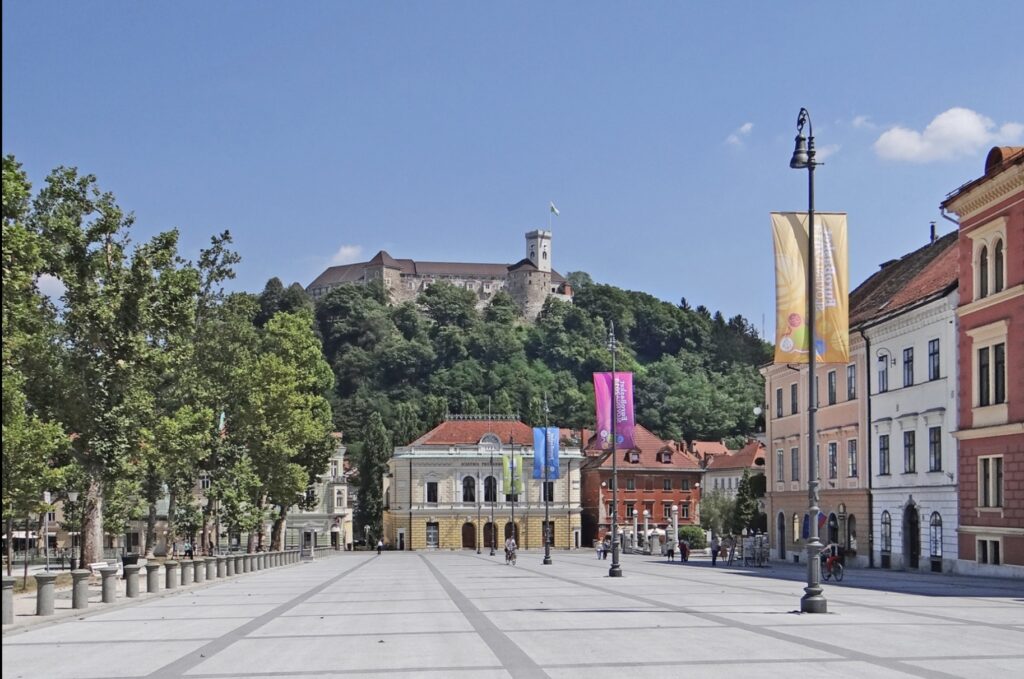
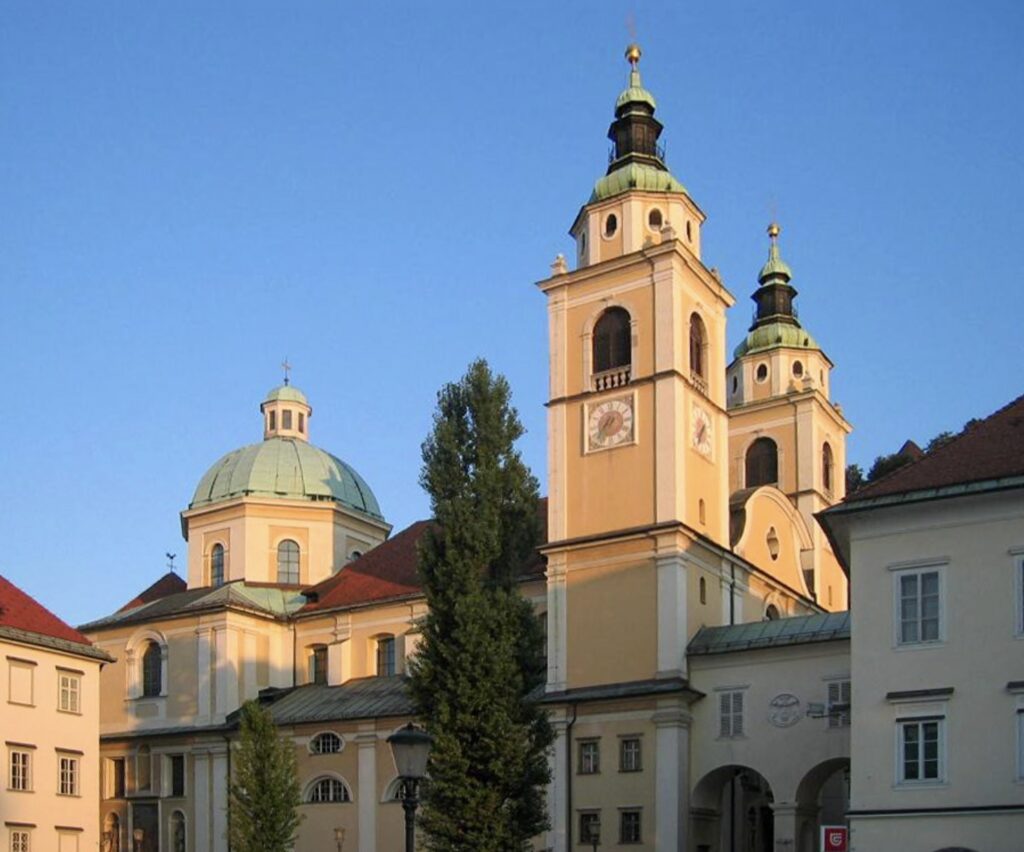
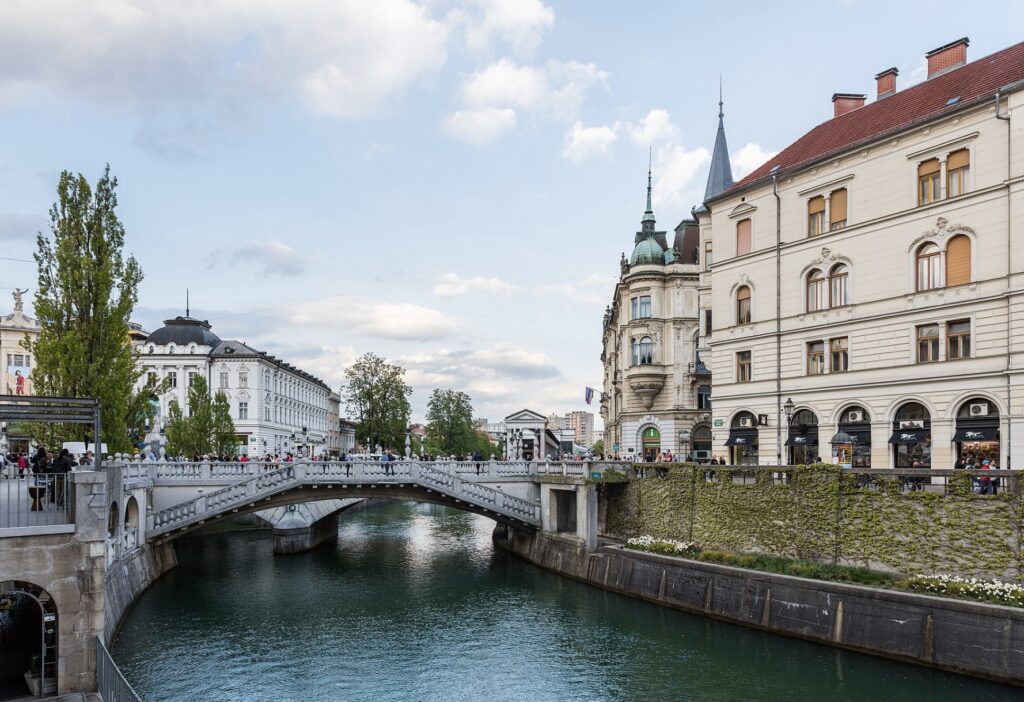
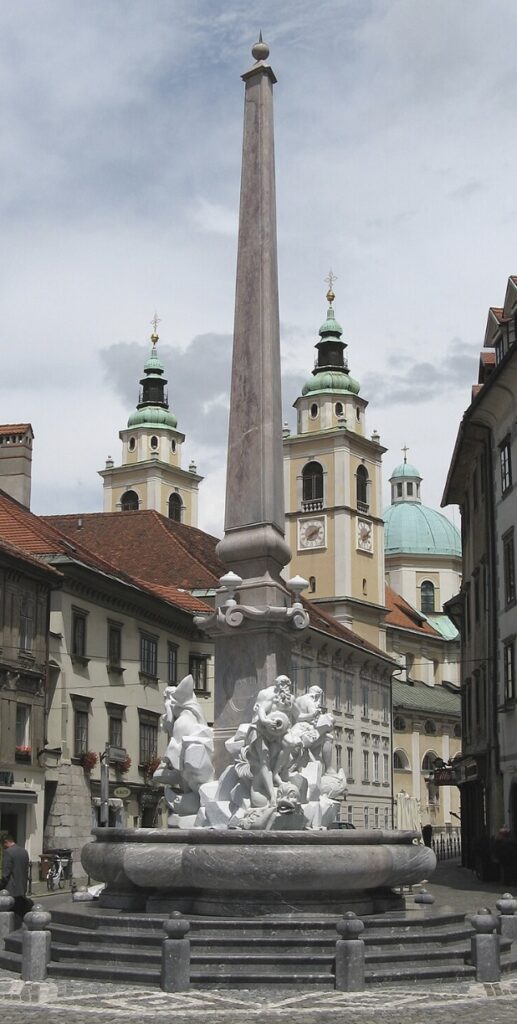
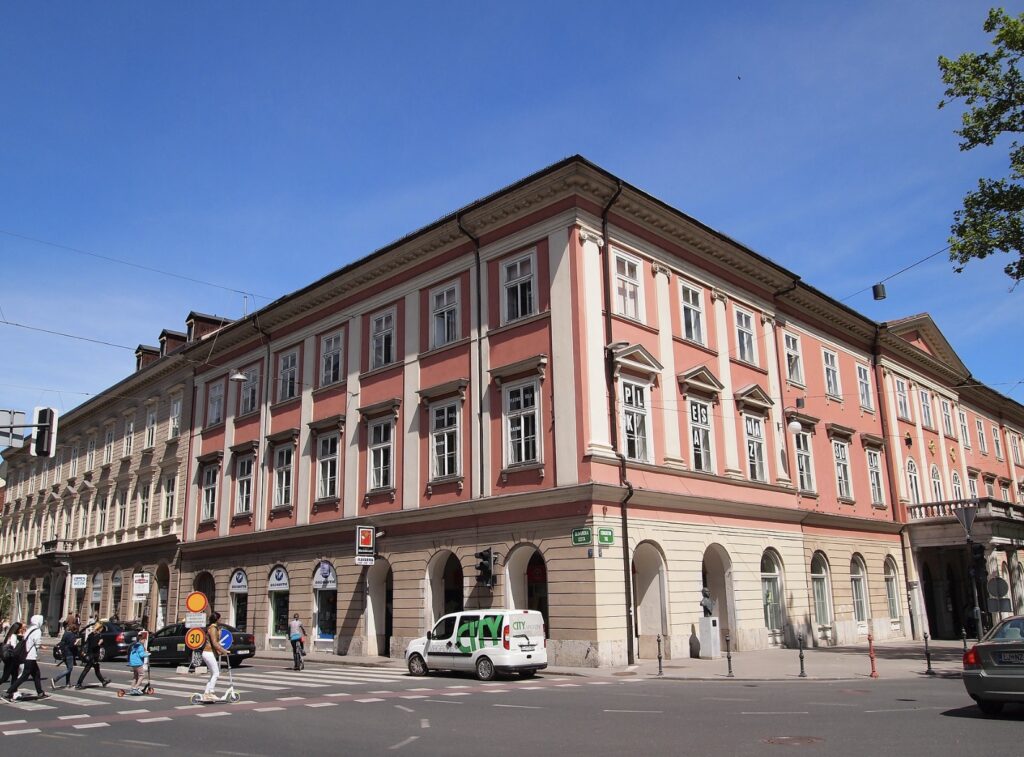
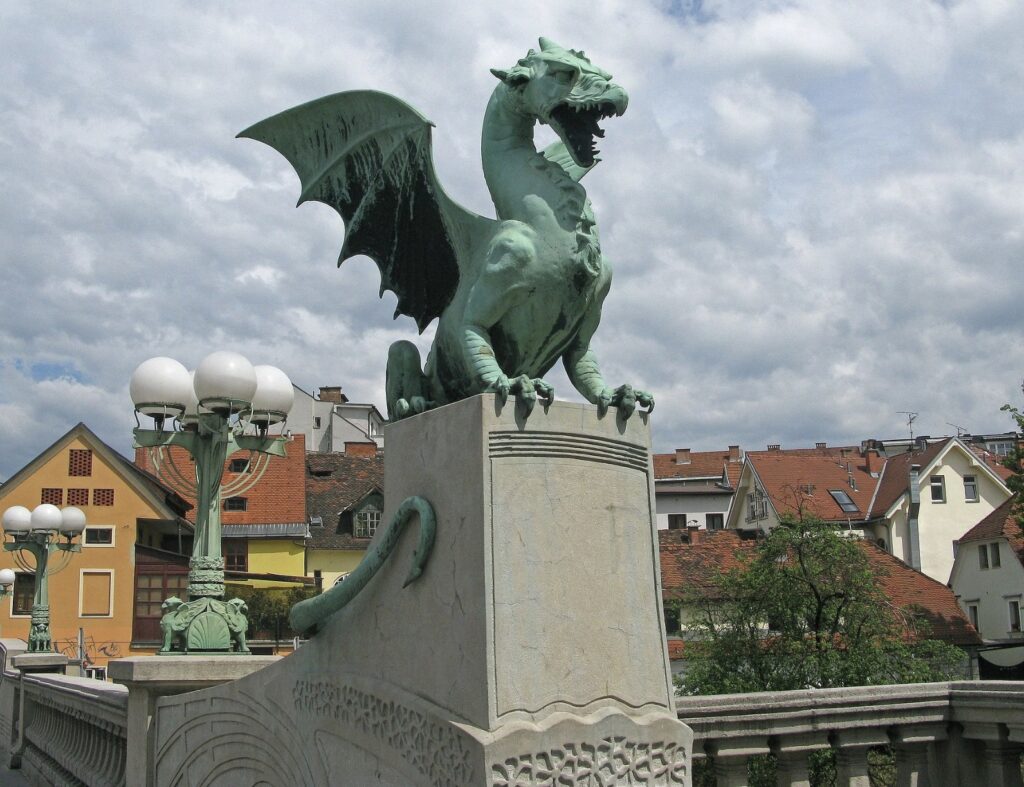
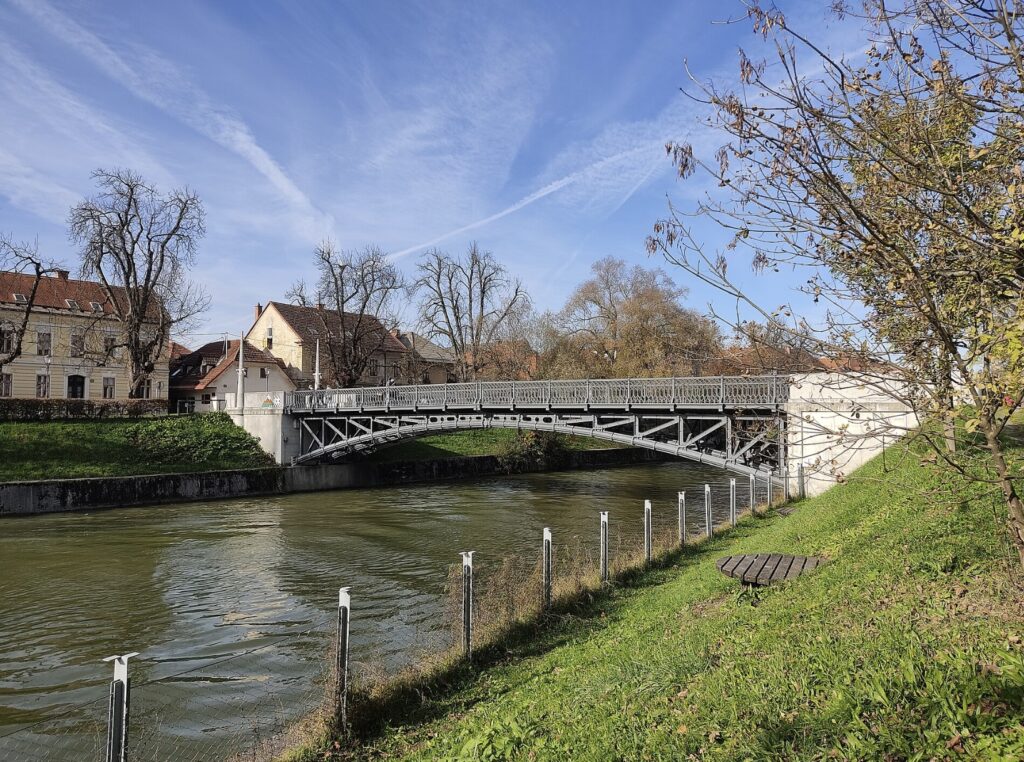
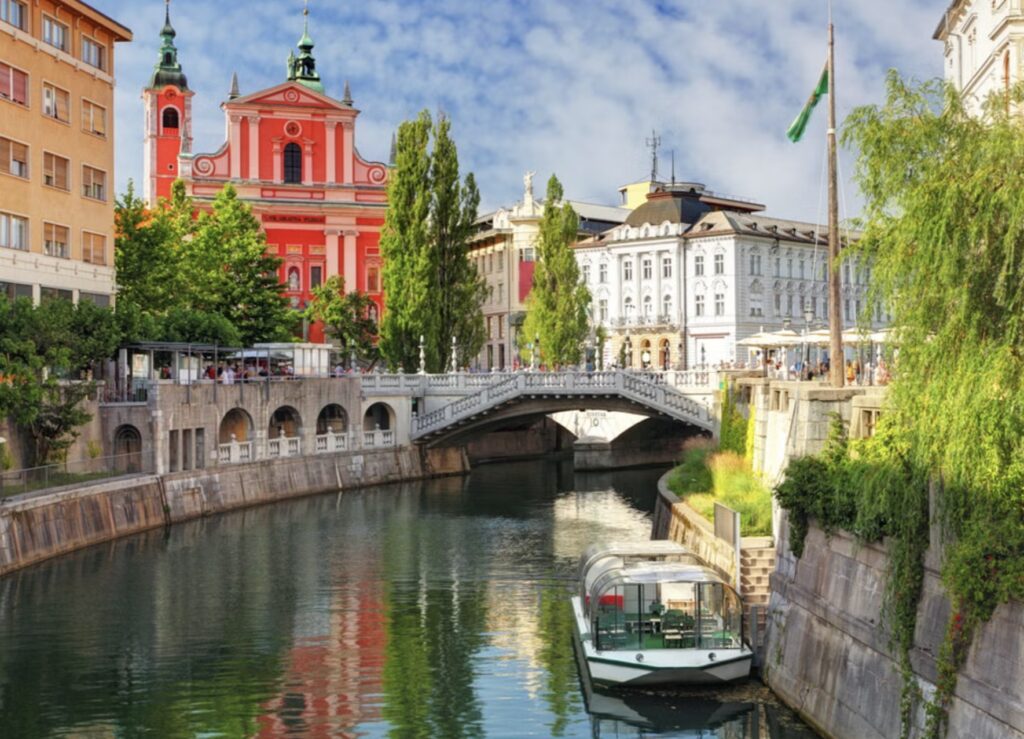
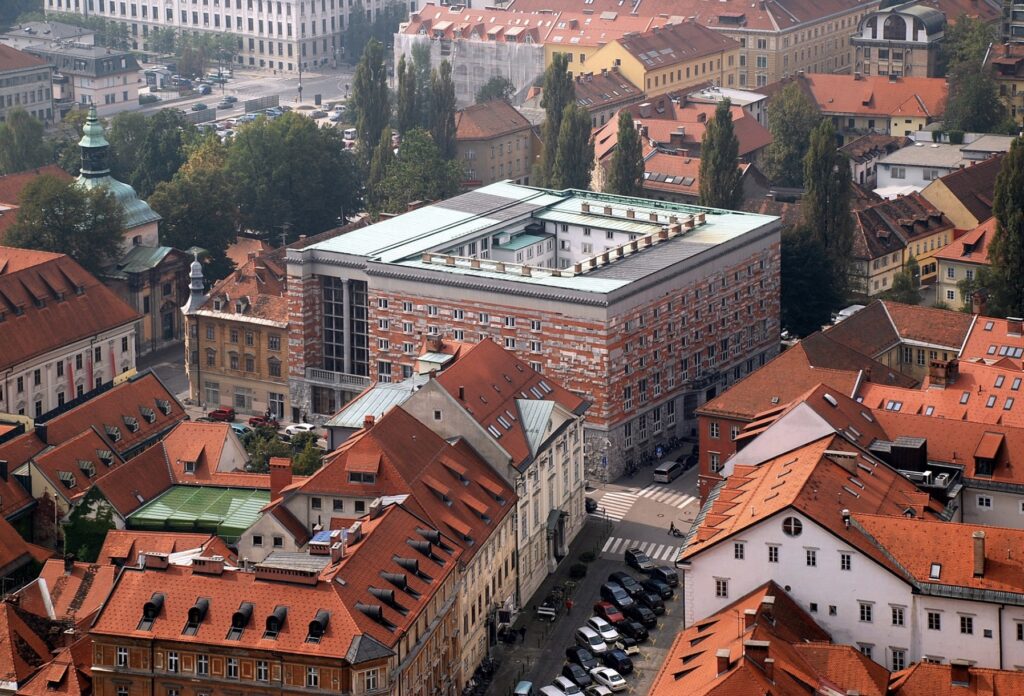
The Botanic Garden Ljubljana, established in 1810, is the oldest cultural, scientific, and educational institution in Slovenia. Located in the heart of Ljubljana, near the Ljubljanica River, it serves as an important center for botanical research and conservation. The garden covers an area of approximately 2 hectares and is home to over 4,500 plant species, including a significant number of endemic and rare species.
The garden’s collection includes a diverse range of native Slovenian plants as well as exotic species from around the world. It features several themed sections, such as an arboretum, an alpine garden, a tropical greenhouse, and a rock garden. The Botanic Garden also plays a crucial role in the conservation of endangered plant species and participates in various international botanical projects.
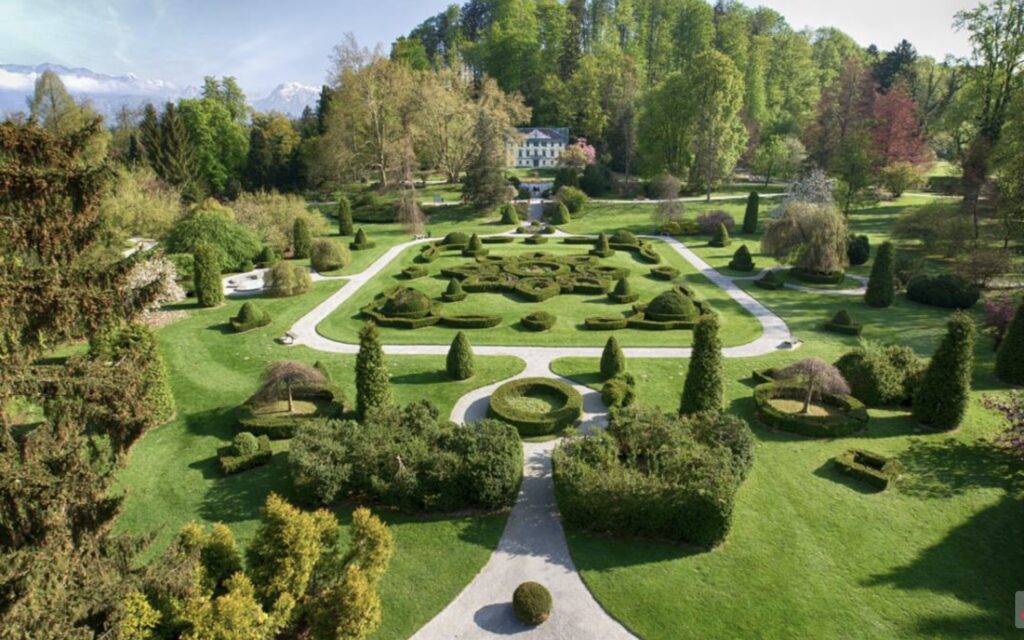
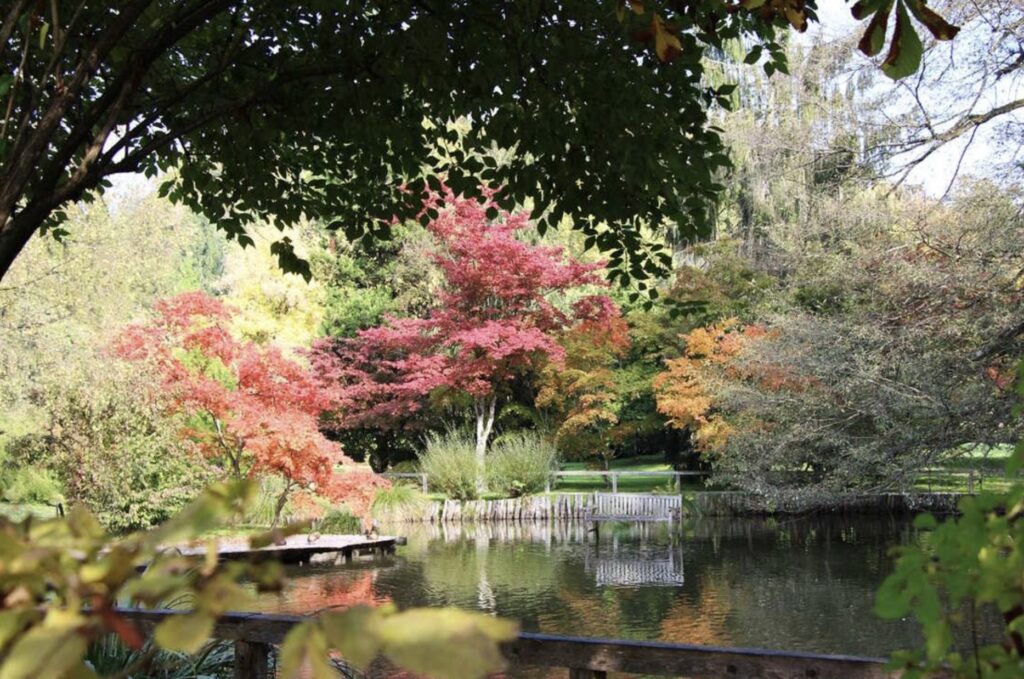
In Ljubljana, you can explore Baroque and Art Nouveau architecture along several notable streets and areas:
Baroque Architecture:
- Mestni trg (Town Square):
- This square features the Town Hall and the Robba Fountain, both excellent examples of Baroque architecture. The surrounding buildings also showcase Baroque facades and details.
- Stari trg (Old Square):
- This charming street, along with Gornji trg, is lined with Baroque buildings. The area near the Ljubljana Cathedral (St. Nicholas’s Cathedral) is particularly notable for its Baroque style.
- Gornji trg (Upper Square):
- This continuation of Stari trg leads towards the Ljubljana Castle and features well-preserved Baroque townhouses.
Art Nouveau Architecture:
- Miklošičeva cesta:
- This street is home to several impressive Art Nouveau buildings, including the Urbanc House (Centromerkur) and the Grand Hotel Union. The facades and decorations are characteristic of the Art Nouveau style.
- Čopova ulica:
- Close to Prešeren Square, this pedestrian street features a number of Art Nouveau buildings, including the Hauptmann House, with its intricate floral motifs.
- Tivolska cesta:
- This street, particularly near Tivoli Park, has a few notable Art Nouveau buildings, including the Hotel Union Executive and other commercial and residential structures.
- Prešernova cesta:
- The street leading to Tivoli Park includes the National Gallery, which is a blend of styles but features Art Nouveau elements, especially in its newer wing.
These areas offer a delightful mix of architectural styles, reflecting Ljubljana’s rich history and the influence of various cultural movements. Strolling through these streets, you can appreciate the artistic and historical significance of the city’s architecture.
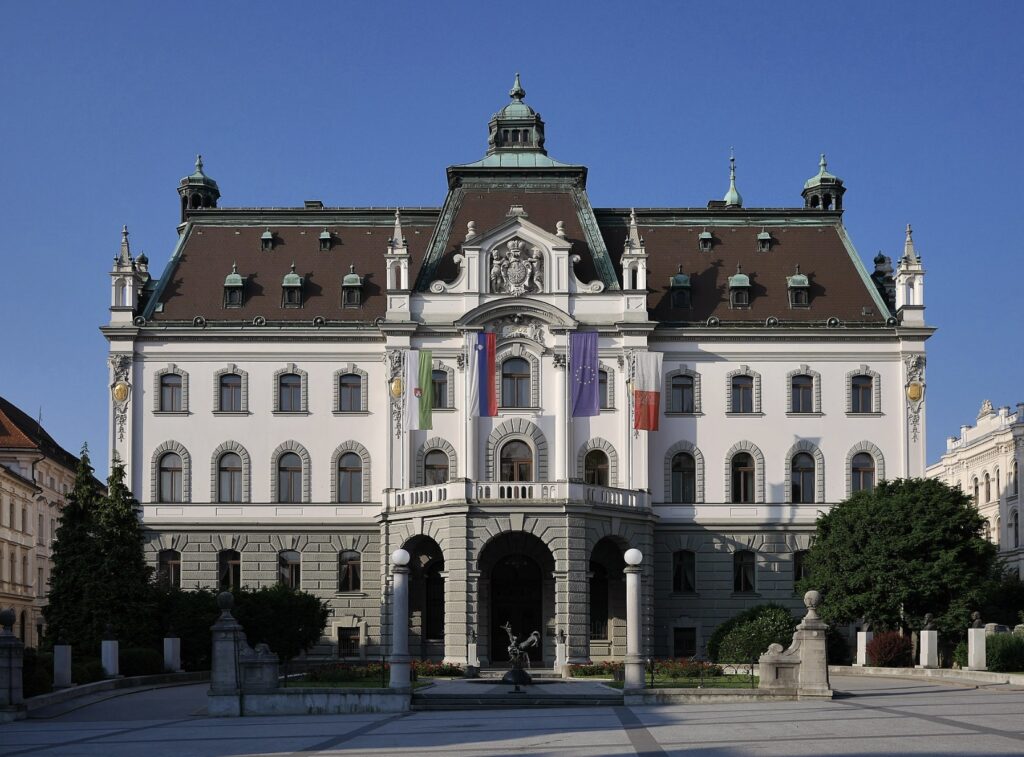
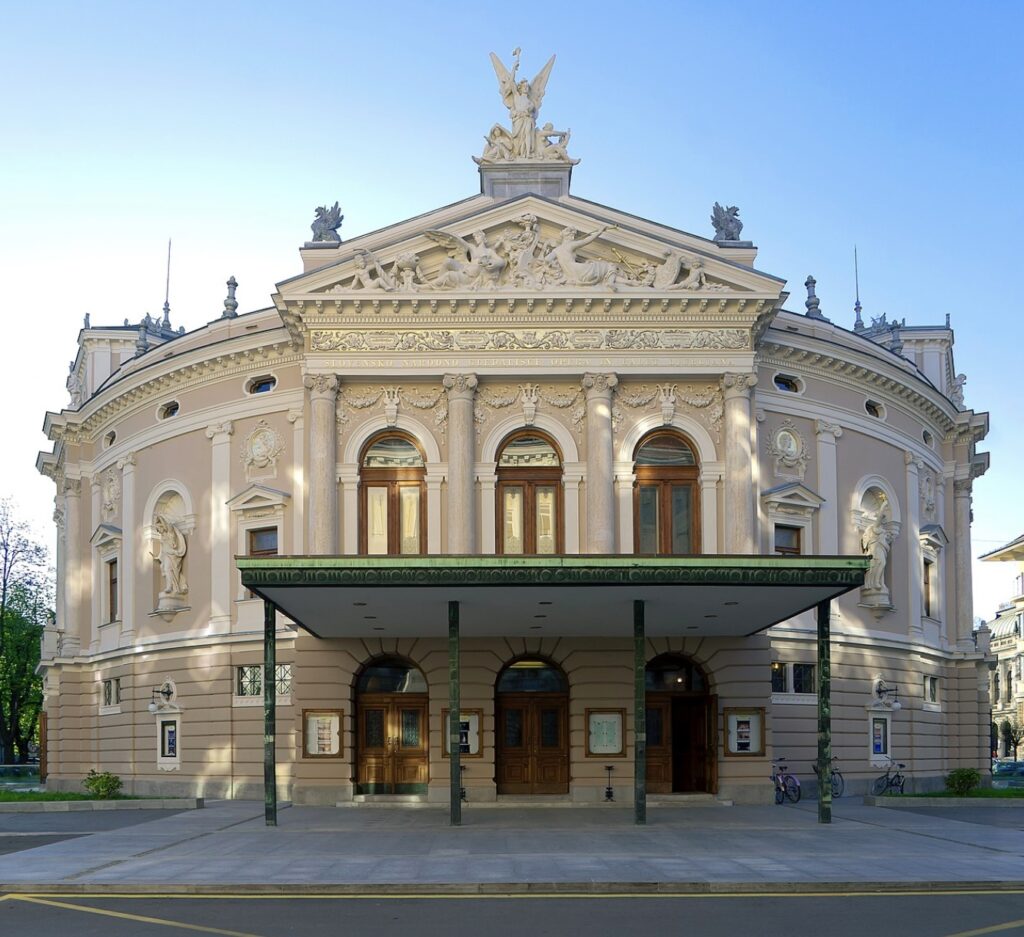
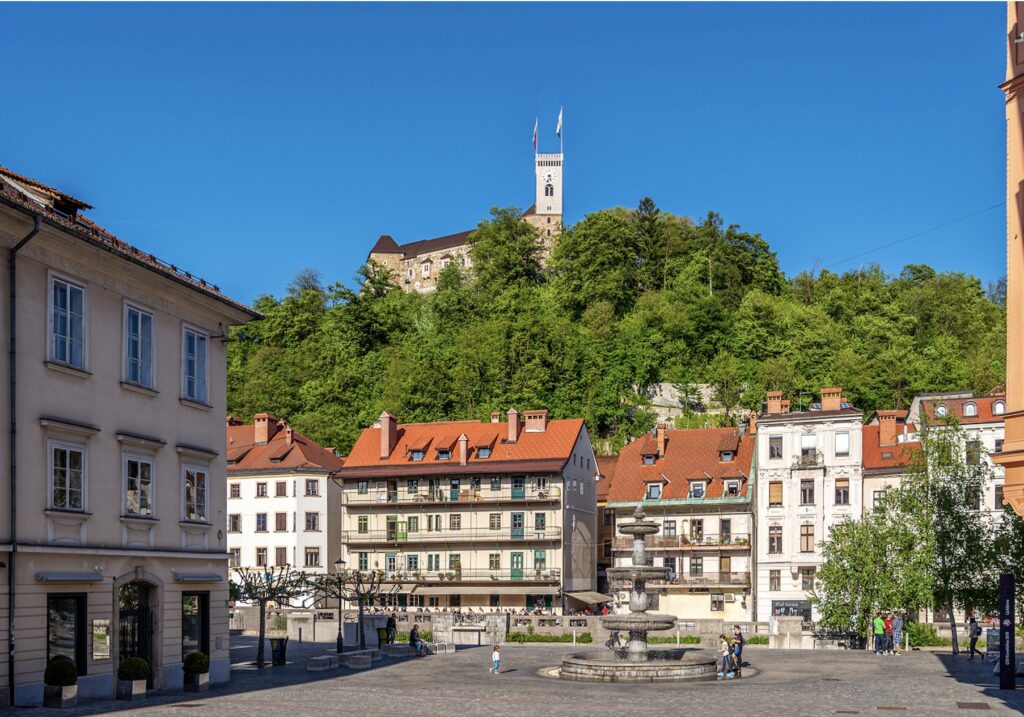
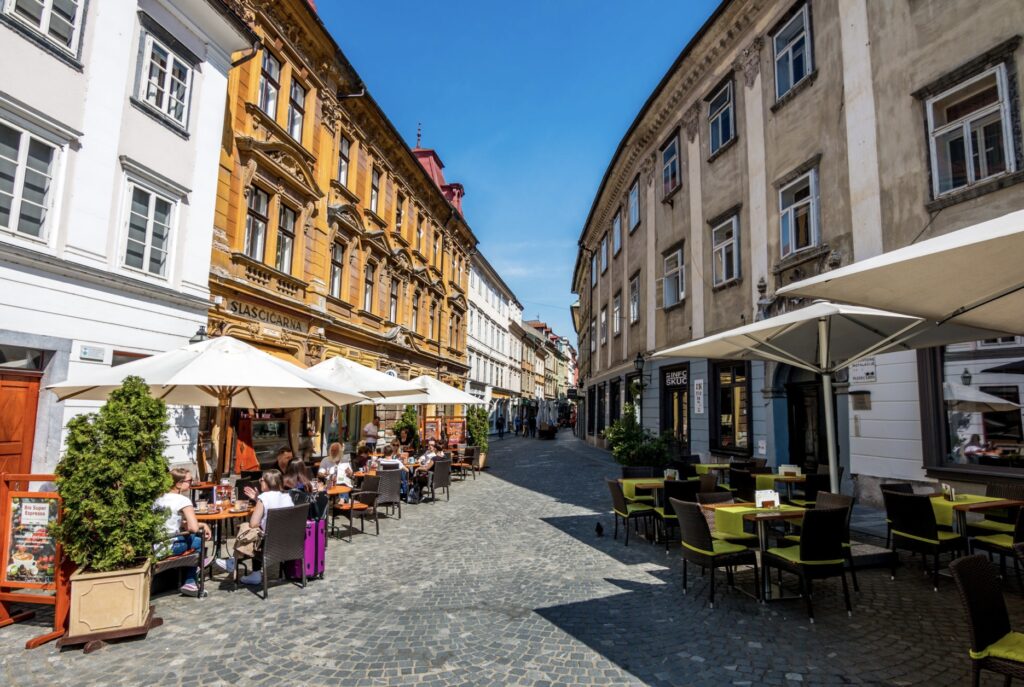
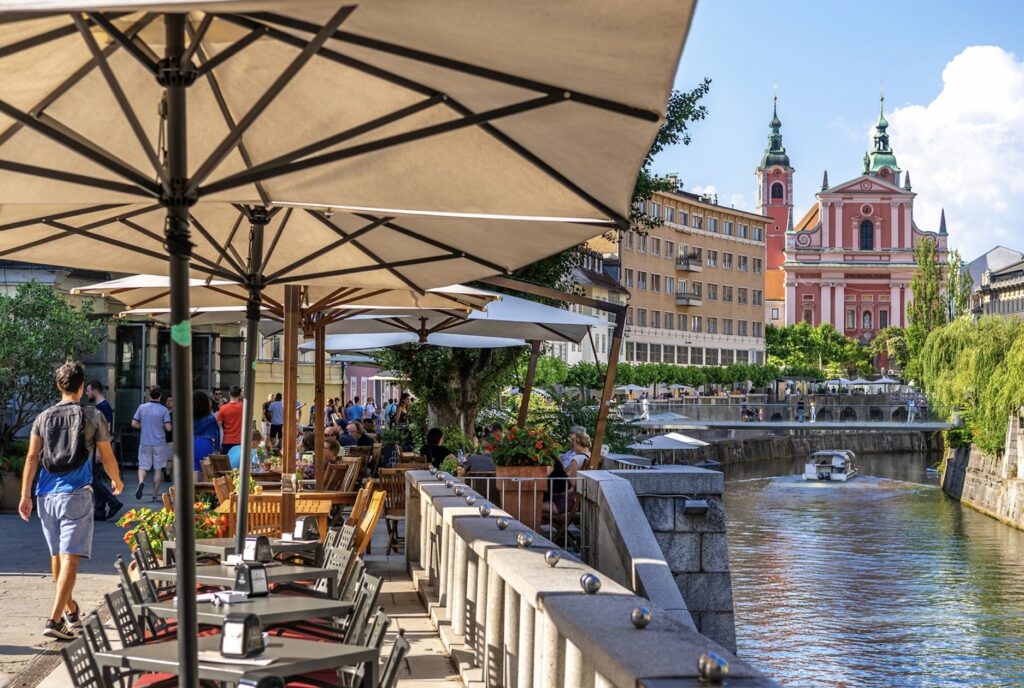
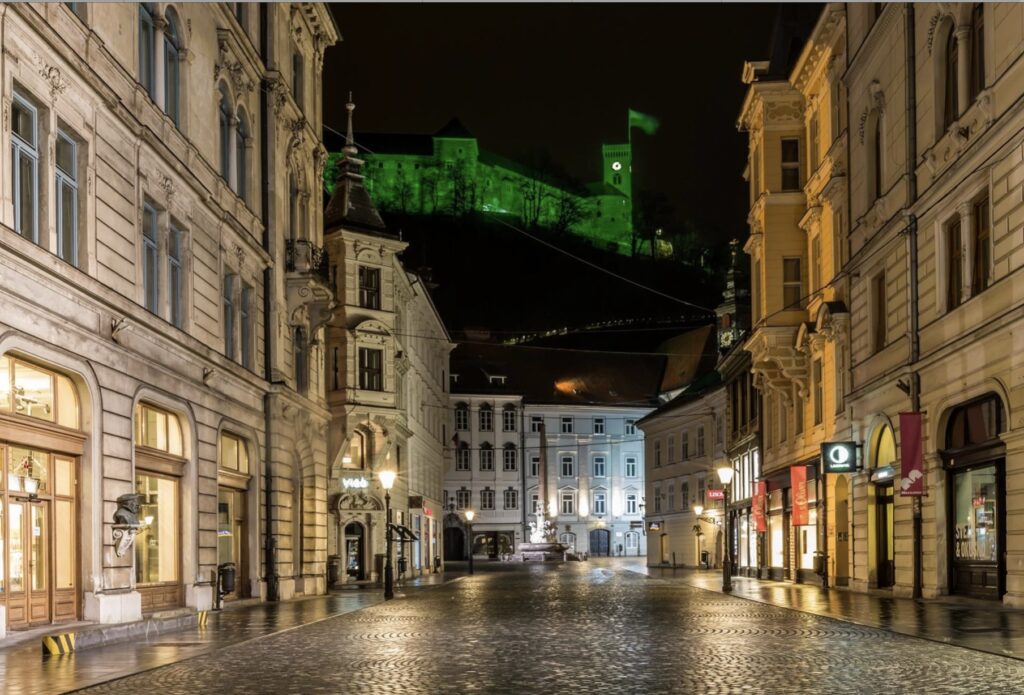
Here’s a one-day itinerary for visiting Ljubljana, incorporating some of the city’s must-see sights and local food specialties:
Morning:
- Breakfast at a Local Café:
- Start your day with a typical Slovenian breakfast at a local café. Try “potica,” a traditional Slovenian nut roll pastry, with a cup of coffee.
- Ljubljana Castle:
- Take the funicular or hike up to Ljubljana Castle. Explore the castle’s museums and enjoy the panoramic views of the city. The castle offers a great overview of Ljubljana’s history.
- Triple Bridge and Prešeren Square:
- Head down to the iconic Triple Bridge and Prešeren Square. Visit the nearby Franciscan Church of the Annunciation and take some photos of the picturesque surroundings.
- Stroll along the Ljubljanica River:
- Walk along the Ljubljanica River, taking in the scenic views and historic architecture. Cross the Dragon Bridge and enjoy the sight of the famous dragon statues.
Lunch:
- Traditional Slovenian Lunch:
- Stop at a traditional Slovenian restaurant, such as “Gostilna Sokol” or “Klub Gurmanov,” to try local specialties like “žlikrofi” (dumplings), “kranjska klobasa” (Carniolan sausage), and “jota” (a hearty bean and sauerkraut stew). Pair your meal with a glass of Slovenian wine or local beer.
Afternoon:
- Mestni trg and Stari trg:
- Wander through the historic Mestni trg and Stari trg areas, where you can admire the Baroque and medieval architecture. Visit the Ljubljana Cathedral and the Town Hall, and enjoy the lively atmosphere.
- Tivoli Park:
- Spend some time in Tivoli Park, Ljubljana’s largest green space. Take a leisurely stroll, visit the Tivoli Mansion, and explore the International Centre of Graphic Arts.
- Metelkova City:
- Explore Metelkova City, an alternative cultural center known for its vibrant street art, unique architecture, and creative atmosphere.
Evening:
- Dinner with Local Specialties:
- For dinner, head to a restaurant like “Julija” or “Monstera Bistro” to enjoy dishes that highlight local ingredients and Slovenian cuisine. Consider trying “štruklji” (rolled dough with various fillings) or “žganci” (a traditional dish made from buckwheat or cornmeal).
- Evening Stroll and Dessert:
- After dinner, take a leisurely stroll along the illuminated riverside. Stop at a café or ice cream parlor for a sweet treat, like “kremšnita” (a cream cake) or “prekmurska gibanica” (a layered pastry with poppy seeds, walnuts, apples, and cottage cheese).
- Ljubljana by Night:
- End your day with a nightcap at one of the city’s many bars or enjoy a cultural event if available. The city’s nightlife offers a range of options, from relaxed bars to lively clubs.
This itinerary provides a comprehensive experience of Ljubljana’s sights, sounds, and flavors, offering a taste of the city’s rich culture and cuisine.
